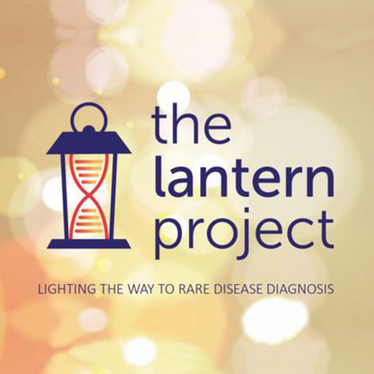Program eligibility
The Lantern Project consists of α-galactosidase A enzyme assay with reflex to GLA sequencing if deficient in males, GLA sequencing in females, and quantitation of lyso-Gl3 for both males and females. This program is for individual patients suspected of having Fabry disease via:
- Symptoms consistent with Fabry disease
- Presumptive positive newborn screen for Fabry disease
- Family history of Fabry disease or individuals with symptoms consistent with Fabry disease
About the test
Testing algorithm:
Males: α-galactosidase A enzyme activity assay, if deficient, will reflex to GLA sequencing and lyso-Gl3.
Females: GLA gene sequencing; samples demonstrating one pathogenic or likely-pathogenic variant, or one variant of uncertain significance will reflex to lyso-Gl3.
*Lyso-Gl3 testing via the Lantern Project is for diagnostic purposes only.
Sample requirements
α-galactosidase A enzyme assay, Lyso-GB3
- Dried blood spots are preferred, but whole blood is also acceptable.
GLA gene sequencing
- Dried blood spots (DBS) are preferred, but whole blood is also acceptable. A saliva sample can be used if only gene sequencing is being ordered.
Bundled testing (Enzyme assay with reflex to sequencing and biomarker)
- Dried blood spots (DBS) are preferred, but whole blood is also acceptable. A saliva sample cannot be used for enzyme assay or biomarker measurement.
Methodology
Enzyme assay
- α-galactosidase A activity is measured on dried blood spots (DBS) via Flow Injection Tandem Mass Spectrometry (FIA/MS/MS).
Biomarker assay
- Lyso-ceramide trihexoside (Lyso-GB3) is measured on dried blood spots (DBS) via Liquid Chromatography Tandem Mass Spectrometry (LC/MS/MS).
Gene sequencing assay
- GLA sequencing is performed using NGS and analysis of all coding exons and 10bp of flanking intronic regions. This assay cannot detect variants in regions of the exome that are not covered, such as deep intronic, promoter, and enhancer regions, or areas containing large numbers of tandem repeats. Copy number variation (CNV) of three exons or more is reported. Single exon CNVs can also be predicted, but reported after follow-up confirmation is performed.
Turn-Around-Times (TAT)
α-galactosidase A enzyme assay: 3 days
GLA gene sequencing: 3 weeks
References
1. Germain DP. Fabry disease. Orphanet J Rare Dis. 2010;5(30):1-49.
2. Schiffmann R, Hughes DA, Linthorst GE, et al. Screening, diagnosis, and management of patients with Fabry disease: conclusions from “Kidney Disease: Improving Global Outcomes” (KDIGO) Controversies Conference. Kidney Int. 2017;91:284-293.
3. Eng CM, Germain DP, Banikazemi M, et al. Fabry disease: guidelines for the evaluation and management of multi-organ system involvement. Genet Med. 2006;8(9):539-548.
4. Ortiz A et al. Fabrydisease revisited: Management and treatment recommendations for adult patients. Mol Genet Metab. 2018 Apr;123(4):416-427. doi: 10.1016/j.ymgme.2018.02.014. Epub 2018 Feb 28. Review. PMID: 29530533.
5. Matern, D. Gavrilov, D. Oglesbee, K. Raymond, P. Rinaldo, S. Tortorelli, Newborn screening for lysosomal storage disorders, Semin. Perinatol. 39 (2015) 206–216.
6. Smid BE, et al. Plasma globotriaosylsphingosine in relation to phenotypes of Fabry disease J Med Genet 2015;52:262–268.
7. Wilcox W et al Females with Fabry disease frequently have major organ involvement: Lessons from the Fabry Registry Molecular Genetics and Metabolism 93 (2008) 112–128.
How to order
Step 1
Test selection and place order
Step 2
Specimen collection and shipment
Step 3
Get results
How to order
1. Test selection and place order
Select the correct test for your patient, and fill out The Lantern Project Requisition Form.
- Please make sure that all sections are completed, and that the patient has signed the informed consent form.
2. Specimen collection and shipment
- Obtain a sample for testing from the patient using one of the provided Revvity Omics test packs. If you do not have a kit available in your office, please contact us here and we can have one sent out to your office.
- Ensure that the patient sample is labeled with the patient’s name and date of birth.
- Please note that all biochemical assays require a dried blood spot sample or whole blood. Step-by-step instructions for collecting a sample can be found here.
- Samples may be submitted without a collection kit by following the guidelines for specimen requirements and completing the requisition form.
- Package the patient sample, informed consent form, and test requisition form back into the test kit, and utilize the included pre-paid shipping label to return the kit to Revvity Omics for processing.
- As a patient’s clinical presentation is an essential part of fully interpreting genetic test results, we ask that you kindly include any applicable medical records or clinical notes with the sample at the time of test submission.
3. Get results
Once Revvity Omics receives the sample, you will receive phone call to report abnormal findings, with a written report to follow within the established turnaround time for the ordered test. Bundled tests will be reported together in one comprehensive result.
This testing service has not been cleared or approved by the U.S. Food and Drug Administration. Testing services may not be licensed in accordance with the laws in all countries. The availability of specific test offerings is dependent upon laboratory location. The content on this page is provided for informational purposes only, not as medical advice. It is not intended to substitute the consultation, diagnosis, and/or treatment provided by a qualified licensed physician or other medical professionals.





























